
Table of Contents
- 1 Does it snow in Ireland?
- 2 Snow in Ireland
- 3 What is the weather like in Ireland?
- 4 Snowfall in Ireland
- 5 Traveling around Ireland in Snowy Weather
- 6 Snow Weather Ireland – Things to Do
- 7 Its Snowing in Ireland – What Cities to Visit?
- 8 Does it Snow in Dublin Ireland?
- 9 Does it Snow in Cork Ireland?
- 10 Does it Snow in Northern Ireland?
- 11 Ireland in the Winter – Is it worth a visit?
Does it snow in Ireland?
Many people wonder does Ireland get snow? The answer is yes, but due to its temperate oceanic climate and the modifying effects of the North Atlantic Ocean, Ireland does not receive as much snow as similar latitudes elsewhere in the world.
Snow in Ireland
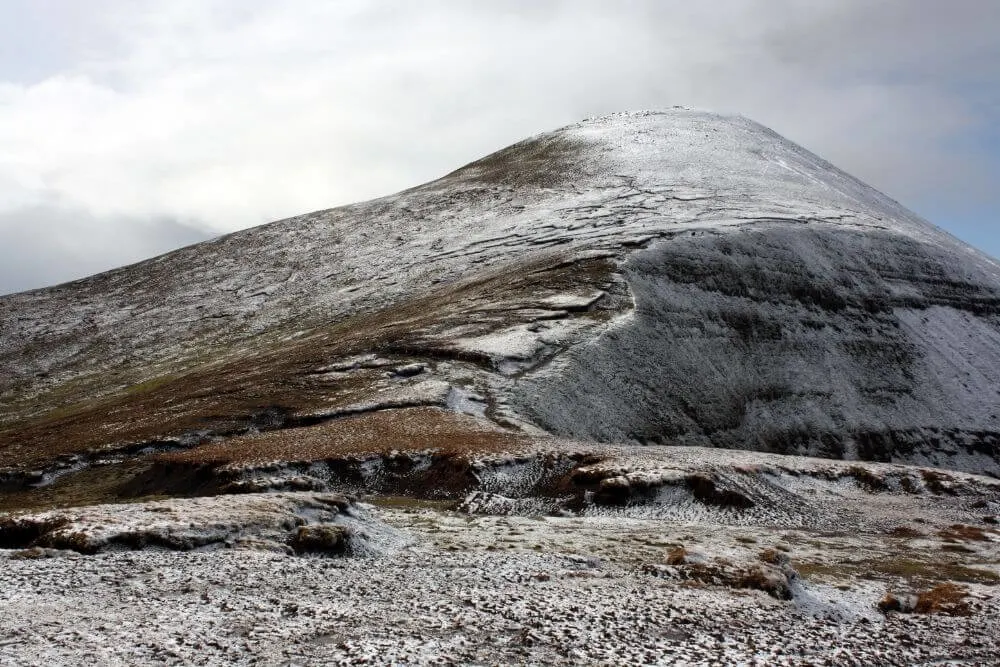
The mountains and upland areas are more likely to get a covering of snow than the low lying land in Ireland, which does not often receive much snowfall.
When it does snow, the temperatures rarely stay cold enough for the snow to stay on the ground more than just a few days.
The chances of encountering a snowy, white Christmas in Ireland are slim, but certainly not out of the realms of possibility and has occurred several times in recent times.
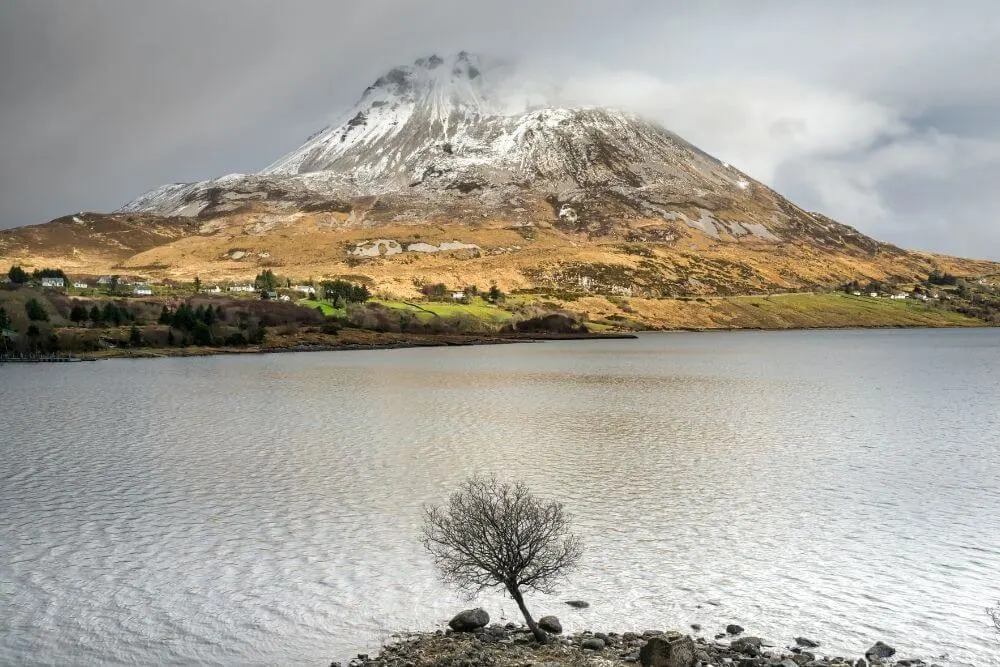
As most people in Ireland experience snow relatively seldomly, when it does snow in Ireland, there is often huge excitement among the general population. Men, women and children of all ages, rediscover the joy (as well as the inconvenience!) of snow.
Fun Fact: sneachta is Irish or Gaelic for snow.
What is the weather like in Ireland?
Ireland’s location on the western outskirts of Europe ensures that the climate of the island is strongly moderated by the Atlantic Ocean.
In addition to the often windy and wet weather that blows in from the Atlantic Ocean, the warm North Atlantic Current (or North Atlantic Drift) transports warmer water that originates in the Gulf Stream towards Ireland.
(This does not mean that the water off the coast of Ireland is particularly warm to swim in, just that the coastal and harbor areas remain icefree during the winter.)
Why doesn’t it snow in Ireland all that much? The buffering effect provided by the influence of the Atlantic Ocean means that unlike areas in continental Europe or similar latitudes in North America, which experience warmer summers and cooler winters, the climate of Ireland is quite moderate all year round and receives little snow.
Summers in Ireland are typically mild and winters are frequently cool and wet with lots of cloud cover.
Climate change predictions for the Emerald Isle in the future predict increased precipitation, especially during autumn and winter.
To sum it up, it is worth investing in a good rain jacket in Ireland as thanks to the Irish climate, you will need it all year round!
Ireland Weather Winter – Is Ireland cold?
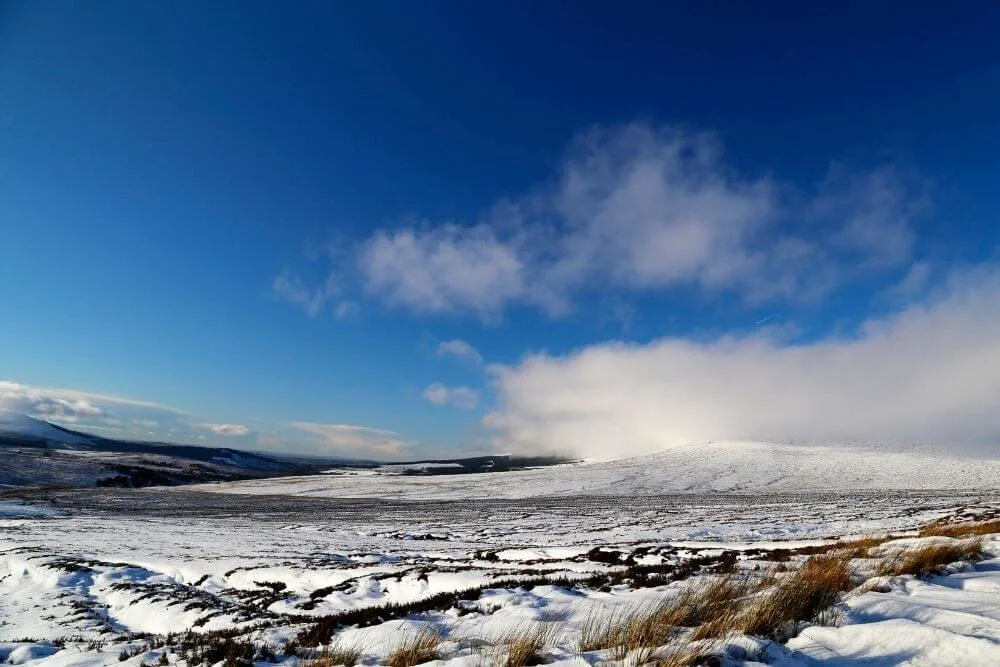
Winter in Ireland is often cool, wet and overcast. Average temperatures range between 4-6 °C (39-42 °F) and precipitation is high during December and January.
Colder conditions are experienced further north in the country, for example Irish winter conditions in County Donegal or in County Antrim, Northern Ireland are often quite different to County Kerry in the south of the country.
Coastal areas often escape the brunt of snowy weather because the sea temperatures at this time are usually warmer than the land temperatures. This leads to milder temperatures near the coast and cooler temperatures inland. Air temperatures during winter in the Midlands, usually stay about 8°C (46°F).
Occasionally, Ireland experiences stunning blue skies and frosty conditions, but on average these days are few and far between.
Winter in Ireland does bring a few storms, but not usually heavy snowstorms. Precipitation usually falls as rain, or sometimes hail or sleet.
The number of daylight hours are significantly reduced during winter. On the winter solstice (December 21), the shortest day of the year, Dublin experiences about 7.5 hours of daylight.
Snowfall in Ireland
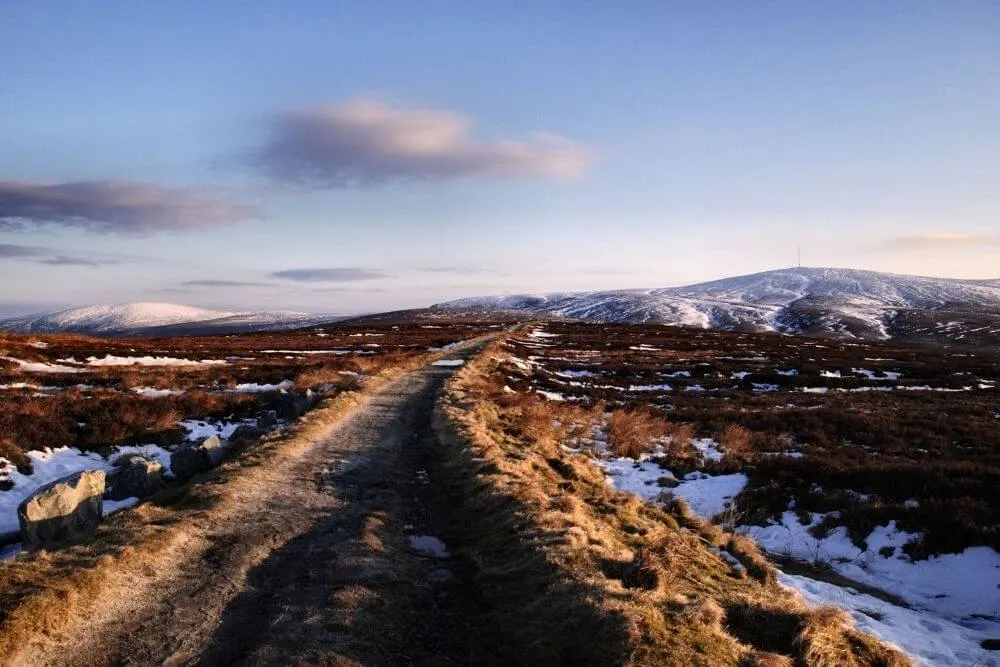
It is possible to get snow at any stage during a cold snap between the months of November to about April, but usually the likelihood is a bit higher during the winter months of December, January or February.
For more detailed information about the Ireland weather by month, check out the following posts: December January February.
Does it snow in Ireland in December?
It does sometimes snow in Ireland in December. The probability of snow in December is a bit lower than the probability of experiencing snow in January or snow in February.
During the months of January or February, the average temperature is usually around 2-8 °C (36-46 °F).
How much snow does Ireland get?
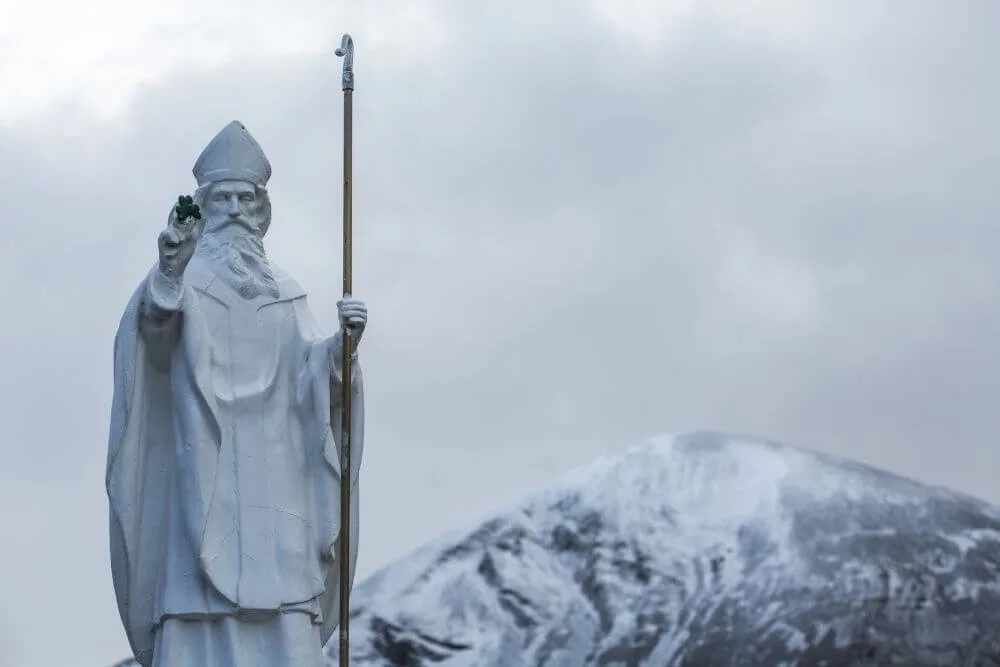
Usually not that much in the lower lying areas, there are some exceptions though.
Storm Emma, which hit Ireland in early March 2018, brought the country to a standstill for several days.
Schools, as well as many businesses were shut due to the unprecedented amounts of snowfall that fell. About 30 cm (12 inches) of snow covered many of the low lying areas of the country, with up to 60 cm (24 inches) found in upland areas in County Wicklow.
How often does it snow in Ireland?
Analysis of past trends in snowfall in Ireland have found that most places can expect an average snowfall in Ireland of 2 cm snow depth every two years.
In the Midlands, every 7 to 18 years a significant amount of snowfall of 10 cm (min.) is expected, while the frequency of this kind of event is reduced to every 6 or 7 years for areas in the north midlands.
Where does it snow in Ireland?
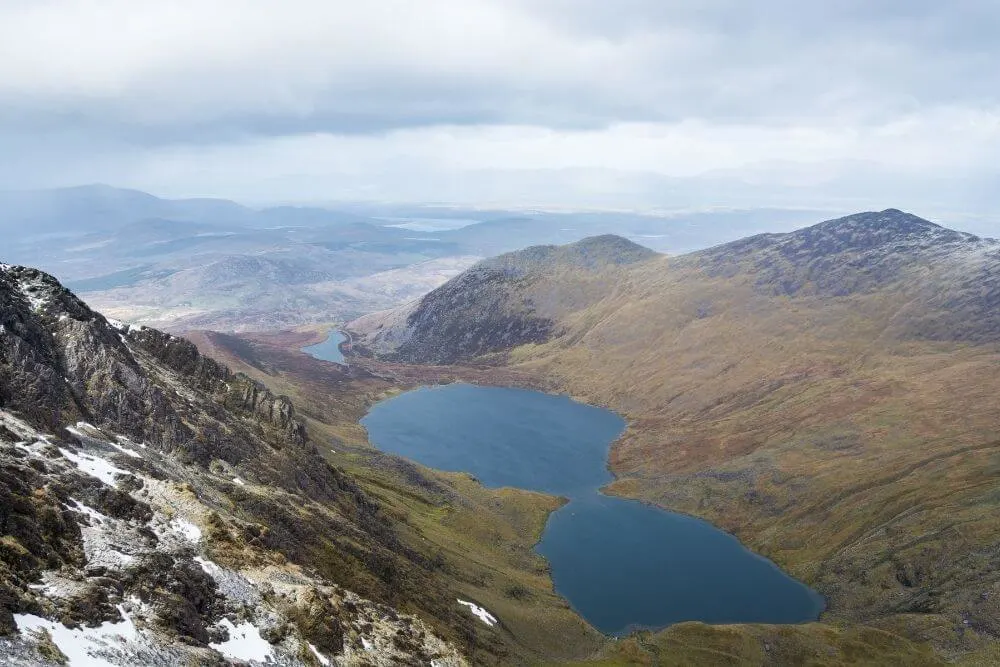
Areas further north and further away from the coast tend to be colder and have an increased chance of snowfall.
Elevation also plays an important role in determining the amount of snow.
Often precipitation that falls as rain on lower ground, will fall as snow in up-lying areas. Mountainous regions in Ireland, such as the Wicklow Mountains, are covered in snow for as many as 30 days during winter.
Further analysis is available from the via the website of the Irish weather forecaster, Met Éireann.
What is the snowiest place in Ireland?
According to old data from the (now closed) weather station in Clones, County Monaghan, this area receives the most snowfall in Ireland. Snow or sleet fell on up to 18 days per year and there on about 6 days there was snow lying on the ground at 9 am in the morning (the standard measure).
What is the least snowiest place in Ireland?
You can expect your chances of encountering snow around the Valentia Island weather station in County Kerry to be pretty slim. (By the way, this station is located near the famous Tetrapod Trackway).
The mild weather conditions indicate that there might only be snow or sleet precipitation in this area on about 5 to 6 days of the year and that it disappears quickly. In fact, there might only be 1 day of the year on average where snow might be lying on the ground at 9 am.
Does it snow in Ireland at Christmas?
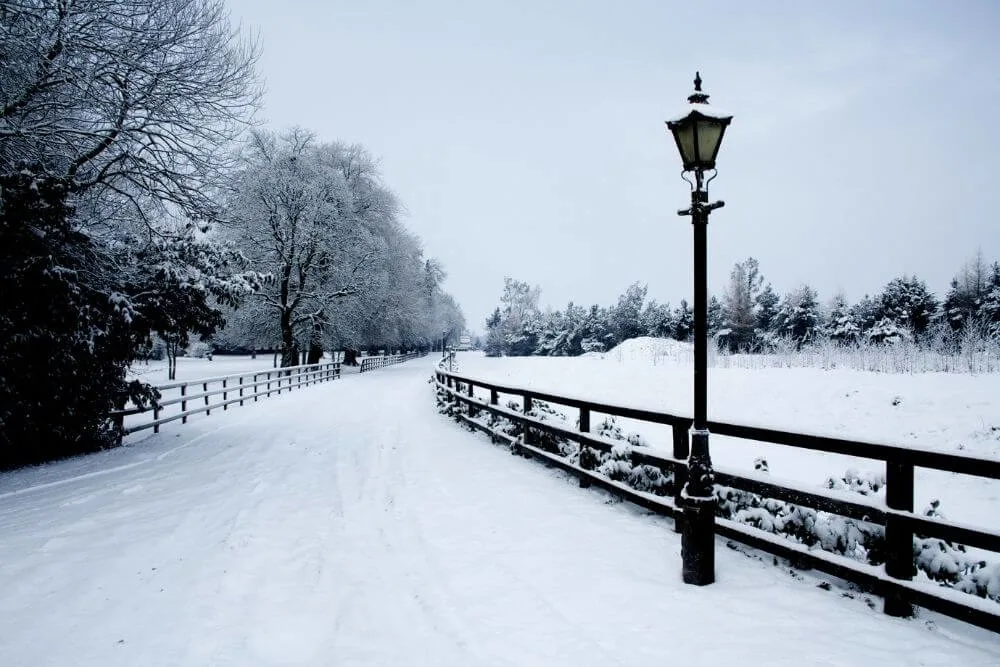
Each year plenty of children (and adults too) ask the same question.
Some years it certainly has snowed at Christmas time in Ireland. It also depends of course where you are in Ireland. There is a great chance of snow the further north in the country you travel, as well as how far above sea level you are.
Dublin Airport weather station (which is neither very far north nor highly elevated) recorded snow cover on Christmas Day on several occasions since the official records started in 1941.
To be precise snow was recorded on Christmas Day in 1950, 1956, 1962, 1964, 1970, 1984, 1990, 1993, 1995, 1999, 2000, 2004 and 2010.
In recent years, Christmas Day in 2010 was the most snowy.
On this day, there was a white blanket of snow over Ireland that covered from the most northerly point of Malin Head in County Donegal to the most southerly point of Mizen Head. This is a particularly rare occurrence that coincided with record breaking temperatures for this time of year.
Traveling around Ireland in Snowy Weather
For most of the year, the rain is the biggest challenge that people experience with regards to the climate in Ireland. Irish travel infrastructure is geared around functioning in wet, rainy conditions.
The snow Ireland does receive appears only occasionally for short periods, so it is fair to say that the Irish in general are not as used to dealing with snow as people in other colder countries.
With this in mind, it is with knowing that only a small amount of snow will (more than likely) cause disruption to the transport networks in Ireland.
The best advice is that when it snows in Ireland, be sure to allow some extra time for your journeys on air, road and rail networks to account for unexpected delays.
Snow Ireland – Road Conditions
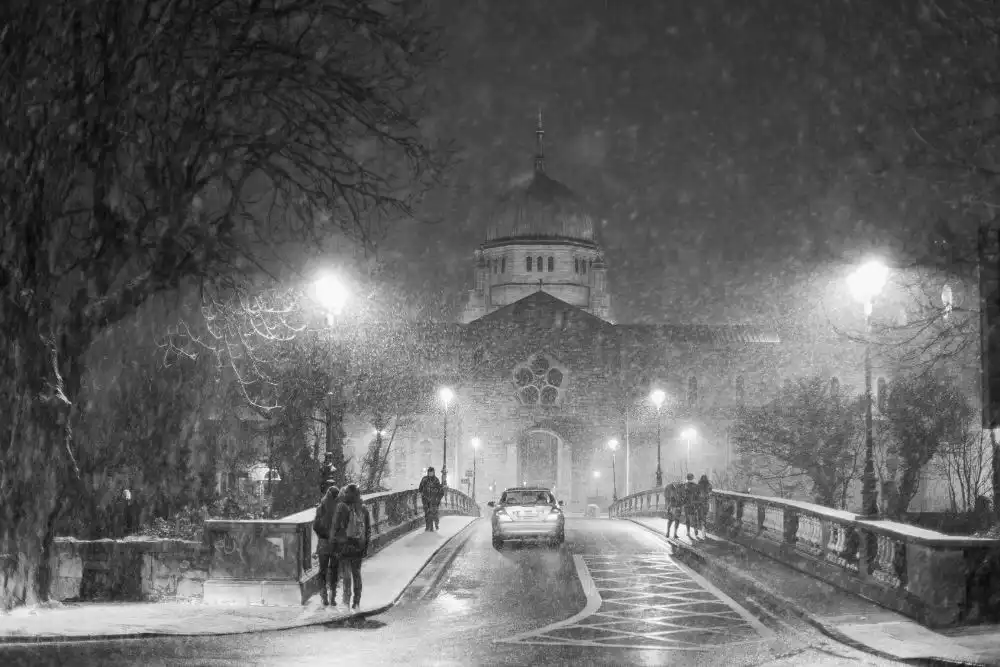
If you happen to be in Ireland during a significant snow event, just be sure to take extra caution while driving.
The main roads will be prioritized and cleared of snow first, but the majority of rural roads will probably not be cleared and can be dangerous.
Unlike many other EU countries, Ireland does not have a law that makes it compulsory to use winter tyres during colder conditions.
Ice, rather than snow, is likely to be the main challenge to winter driving in Ireland, especially when low temperatures hover around the degrees close to freezing point.
Wet and cold conditions during winter mean that icy or slippery road conditions are a common occurrence in Ireland in winter. If you plan on exploring Ireland on a road trip, it is probably best to do it during the warmer months.
The main roads are usually gritted to improve surface grip, but rural roads, particularly those with plenty of bends, can be tricky to navigate.
When in doubt, reduce your speed and drive with extra caution.
In fact, the same warning can be given for pedestrians out and about on footpaths or sidewalks in cities. When conditions are very icey, watch out to avoid getting any sprain injuries.
Ireland in Snow – Air and Rail Travel
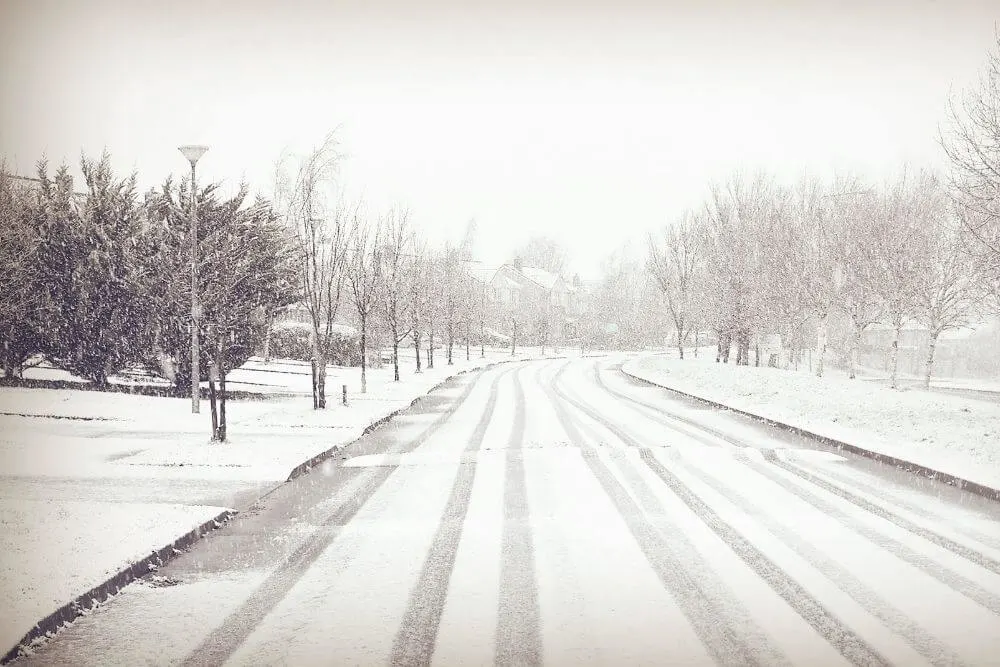
The reality is that Ireland only gets a big snow event every few years, so it does not have a lot of practice dealing with lots of snow.
Be prepared for disruption in the form of delays and cancellations to flights, trains and buses if heavy wintery conditions set in. Plan some extra time to make sure you are not under pressure to make your travel connections.
On the plus side, the wintery conditions are unlikely to last all that long, but generally while they last you can expect some degree of chaos to the transport networks.
While waiting in a queue at Dublin Airport for a flight rescheduled due to snowy conditions in 2010, a passenger from the East Coast of the United States standing behind me was amazed that flights were canceled due to just a few inches of snow. It was just a “little sprinkling”, she said!
Snow Weather Ireland – Things to Do
If you are lucky(?) enough to experience some Irish snow, it is a fabulous opportunity to explore the landscape with a completely different feel. Get up early, wrap up well and be sure to have a camera with you for some extra special photo opportunities!
Sightseeing in Snow in Ireland
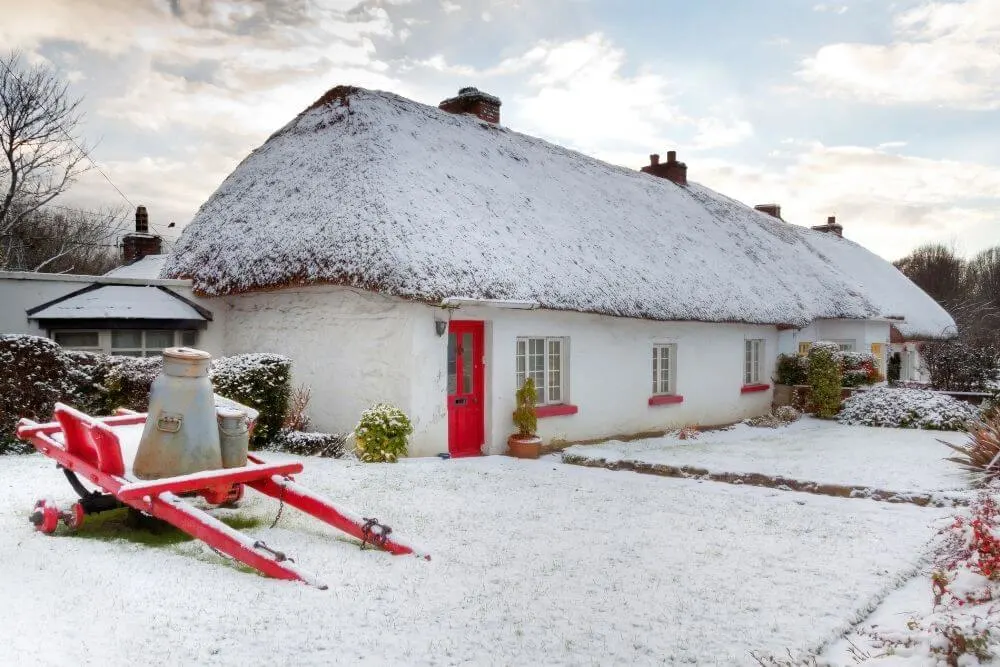
If you are based in a city, then it is usually well worth it to get up early in the morning and be among the first to explore the sights.
Not only can you experience the fresh snow at its purest, you can beat the crowds and get some very memorable photos.
When the chill factor hits, take a wander through the many great museums, galleries or attractions. (Check out some ideas for Dublin here.)
Sample the great cuisine and to wrap up the special day, why not head to the pub to sample a real Irish Coffee.
Ireland Winter Hiking
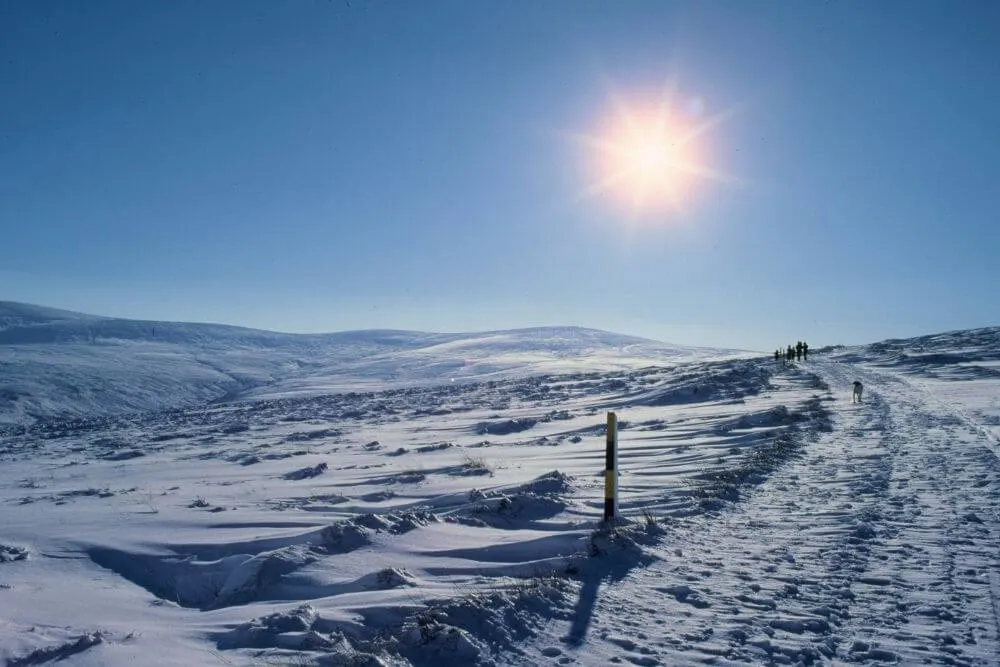
Hiking in Ireland is nearly always a special experience and when the mountains are snow covered, the view is even more beautiful.
Even though Ireland does not have the highest mountains, the conditions, particularly during winter when it snows, should not be underestimated.
Before attempting any hikes, be sure you have sufficient knowledge of the terrain and how to navigate, as well as the correct gear.
It is also important to listen to the news and weather forecast for accurate weather warnings about the snow risks in the area.
Conditions at the base of a mountain can differ considerably from the conditions at the top so it is best to be well prepared. The weather can change rapidly, so unless you are experienced, invest in the help of a guide.
Its Snowing in Ireland – What Cities to Visit?
While snow in Ireland can make traveling around a bit difficult, it can also make a visit to one of the tops cities even more memorable. To give you a better idea of the temperatures during the winter months and what to do when the weather is poor, check out our guides to the main cities of Dublin, Cork and Belfast.
Does it Snow in Dublin Ireland?
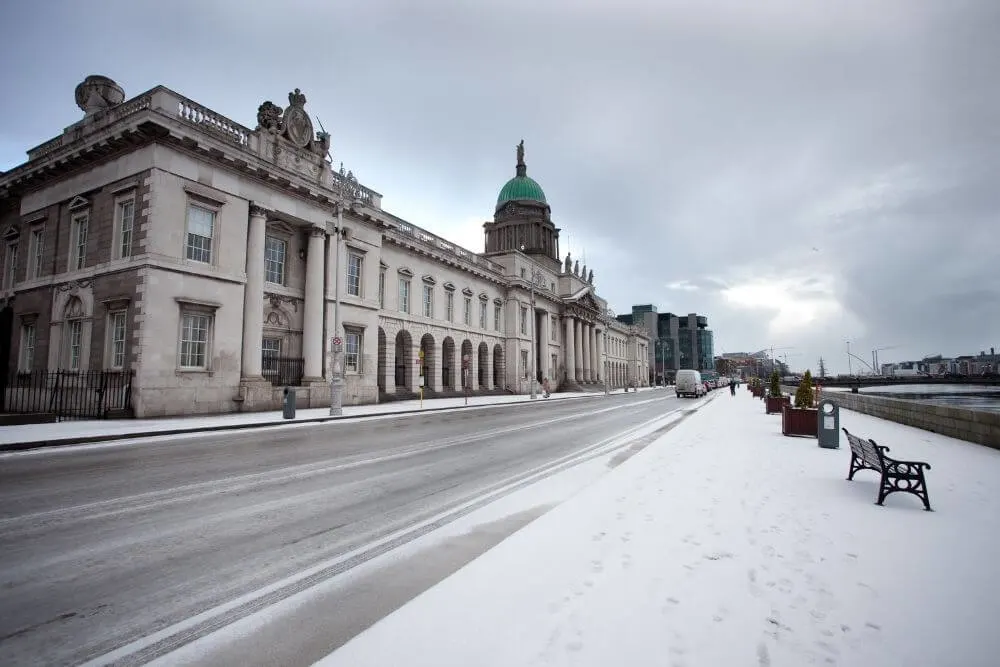
Does it snow in Dublin? Usually, Dublin doesn’t usually receive much snow. Instead precipitation largely falls as rain during the coldest months of the year.
Data from 1981-2010 indicated that on average snow or sleet fell in Dublin on about 16 days, but this usually a light dusting and doesn’t stay on the ground long.
The climate of Dublin on the east coast of Ireland is generally mild. Dublin receives less precipitation in general compared with the west and south of the country due to its relatively sheltered location.
Temperatures in Dublin
For an idea of the average temperature in Dublin in December, January, February and March (which can also be a bit wintery at the start), please see the table below.
Dublin Winter Weather
The weater in Dublin during the winter months is typically as follows:
| December | January | February | March | |
| Average temperature | 6 °C 43 °F | 5 °C 41 °F | 5 °C 41 °F | 6 °C 46 °F |
| Min. and max temperatures | 3-8 °C 37-46 °F | 2-8 °C 36-46 °F | 2-8 °C 36-46 °F | 3-10 °C 37-50 °F |
| Sunrise and sunset on 1st of month | 8.17 a.m. - 4.10 p.m. | 8.40 a.m. - 4.16 p.m. | 8.10 a.m. - 5.07 p.m. | 7.11 a.m. - 6.03 p.m. |
Dublin in Snow – Things to Do in Dublin
A walk around some of the best parks in Dublin City would be especially magical in snow. If you are searching for ideas about how to pass a few hours indoors, check out this itinerary for inspiration.
Another great place to wander and experience Dublin as a picturesque, winter wonderland is along the Royal Canal.
The Sugarloaf Mountain in County Wicklow, or Wicklow National Park are popular snowy day trips from Dublin.
Check out some ideas for things to do in Dublin.
Does it Snow in Cork Ireland?
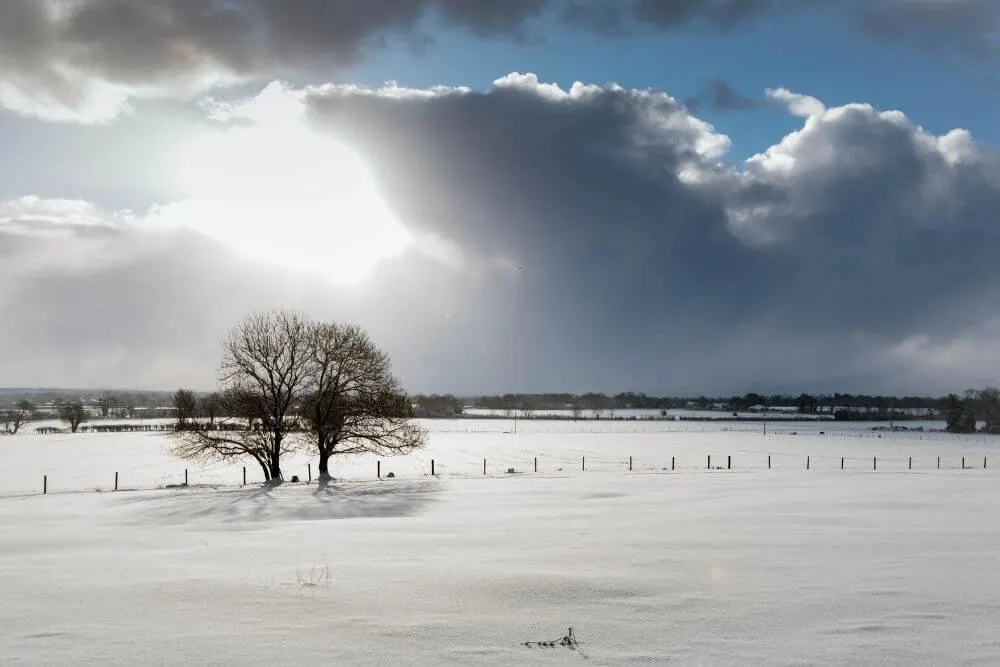
Cork is located on the south coast of Ireland and generally has more precipitation than Dublin for example. The prevailing winds are from the south west and typically bring plenty of rainfall. It often does not experience very cold weather.
Temperatures in Cork
January and February are typically the coldest months in Cork, with temperatures slightly warmer in December. In March, the temperatures, slowly start to rise again, but early March can still bring some wintery conditions (as with Storm Emma in 2018).
Cork Winter Weather
The typical weather in Cork during the winter months.
| December | January | February | March | |
| Average temperature | 6 °C 43 °F | 6 °C 43 °F | 6 °C 43 °F | 7 °C 45 °F |
| Min. and max temperatures | 4-9 °C 39-48 °F | 3-8°C 37-46 °F | 3-8°C 37-46 °F | 4-10 °C 39-50 °F |
| Sunrise and sunset on 1st of month | 8.19 a.m. - 4.26 p.m. | 8.41 a.m. - 4.33 p.m. | 8.14 a.m. - 5.21 p.m. | 7.18 a.m. - 6.14 p.m. |
Snow in Cork – Things to Do
When the weather forecasts predict snow or wintery conditions in Cork, then it is worthwhile checking out some of the indoor attractions that Cork City has to offer such as:
- The Crawford Art Gallery
- The Lewis Gluckmann Art Gallery
- University College Cork with its Stone Corridor filled with ancient ogham stones
- St. Fin Barre’s Cathedral
- Shandon Bells
- Cork Butter Museum
Head to Midleton outside the city, if you would like to take a tour of the Jameson Experience distillery and sample some Jameson Irish Whiskey.
Cobh is nearby and has some attractions that are also possible to do in inclement weather.
Does it Snow in Northern Ireland?
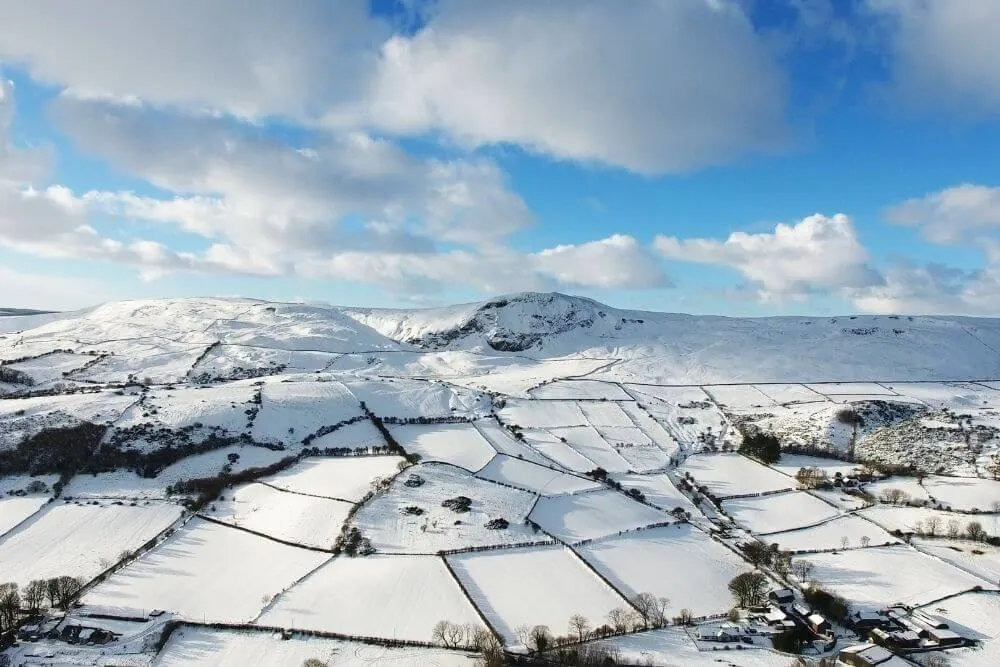
Being that further north, Northern Ireland does receive a little snow, but like the rest of the island, it is not an occurrence that happens very often. When it does, it is usually only temporary lasting on the ground for a few days at most.
With plenty of dramatic scenery around the Causeway Coast, the views in winter can be magical. Just watch out for the road conditions, particularly on the smaller roads.
Temperatures in Belfast in Winter
For an idea of what kind of conditions to expect in Northern Ireland during winter, you can see the average temperature in Belfast below.
| December | January | February | March | |
| Average Temperature | 6 °C | 6 °C | 6 °C | 5 °C |
| Min. and Max Temperature | 3-8 °C | 4-9 °C | 4-9 °C | 2-8 °C |
| Sunrise and Sunset 1st of Month | 8:22 Uhr - 16:02 Uhr | 8:46 Uhr - 16:00 Uhr | 8:13 Uhr - 17:01 Uhr | 7:13 Uhr - 17:59 Uhr |
Snow in Belfast – Things to Do
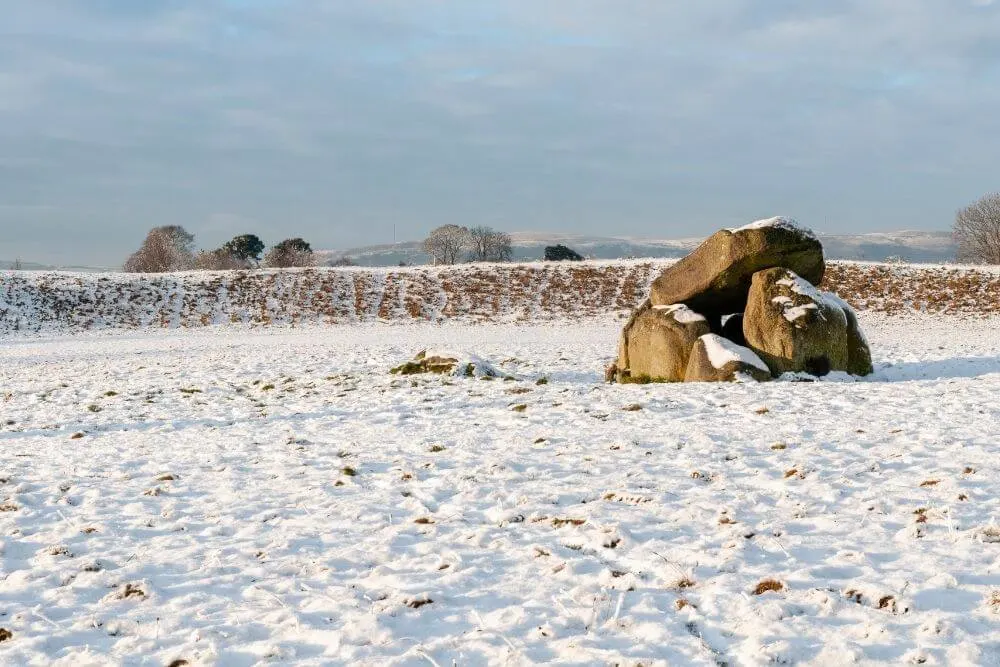
When snowy, wintery conditions hit Belfast, do not despair as there are some great attractions that will keep you occupied.
The Titanic Belfast is one of the biggest attractions in the city. A modern museum dedicated to the building and story of the RMS Titanic on the site of the old shipyard.
A visit to the Crumlin Road Gaol enables visitors to view the interior of a 19th century Gaol that was functioning as a prison up until 1996 and hear the tale of its many inmates over the years.
The Ulster museum is another sight to add to your itinerary. One of its many, many highlights include the Armada Room, which features exhibits from two Spanish armada ships (called Girona and Trinadad Valencera) that sank off the coast of Northern Ireland.
Ireland in the Winter – Is it worth a visit?
If you plan on visiting Ireland in winter, the chances are that you probably won’t encounter a white winter wonderland.
That said there are many great other things to do and see in Ireland during winter that will make traveling to Ireland in winter very worthwhile!
Things to Do in Ireland in Winter
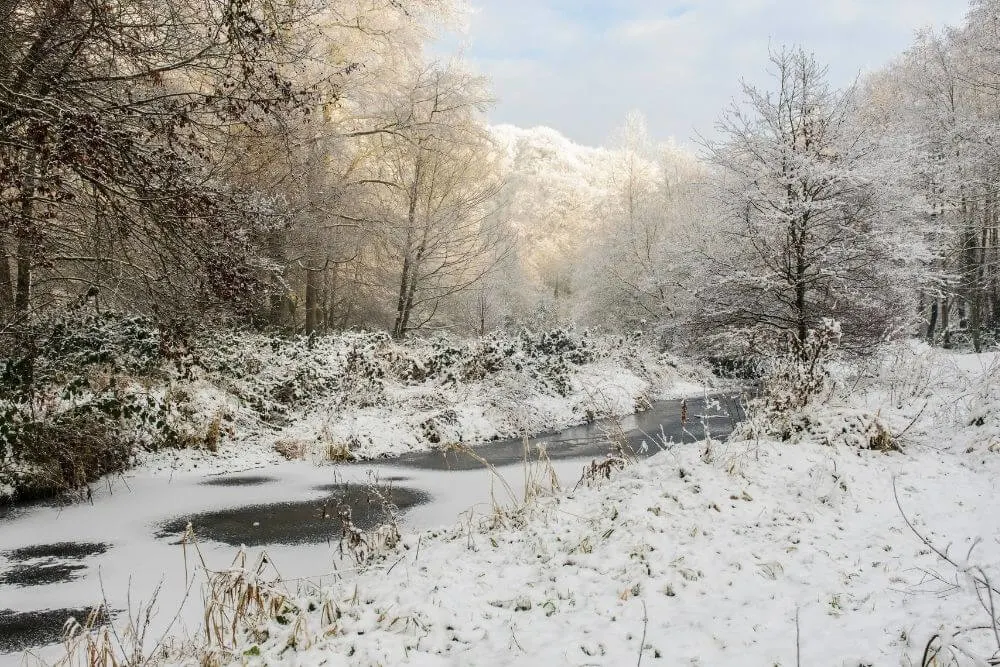
In the run up to Christmas, there are many festivities and events all over the country, as well as great Christmas markets where you can stock up on unique Irish presents and souvenirs. Don’t forget the lively New Year celebrations too! (The Ireland in December Guide will give you some ideas for an Ireland winter vacation.)
It is also a great season to explore the many super museums, theaters and other attractions that Ireland has to offer.
Evenings indoors enjoying the craic or fun in Irish Pubs with traditional Irish music will make the hours fly by!
If you want to explore Ireland and take a tour of the Wild Atlantic Way, make sure you have good warm clothes and waterproofs, as the weather can often be a bit wet and wild at this time of year.
On a calm still night, particularly in the northern part of the country, you might even manage a glimpse the Northern Lights if you are really lucky!
There is another very unique attraction in Ireland that is famous for its connection with the winter solstice. For a few days around the winter solstice (ca. December 21), light from sunrise directly enters the burial chamber of Newgrange passage tomb in Brú na Bóinne through a narrow opening at the entrance to the chamber.
For more information about Ireland weather in winter and Ireland winter temperatures, as well as details about spring in Ireland and summer in Ireland, check out our detailed weather by month posts.
This post contains affiliate links. If you click on one of them, we might receive a small commission (at no extra cost to you). Thanks for your support!
